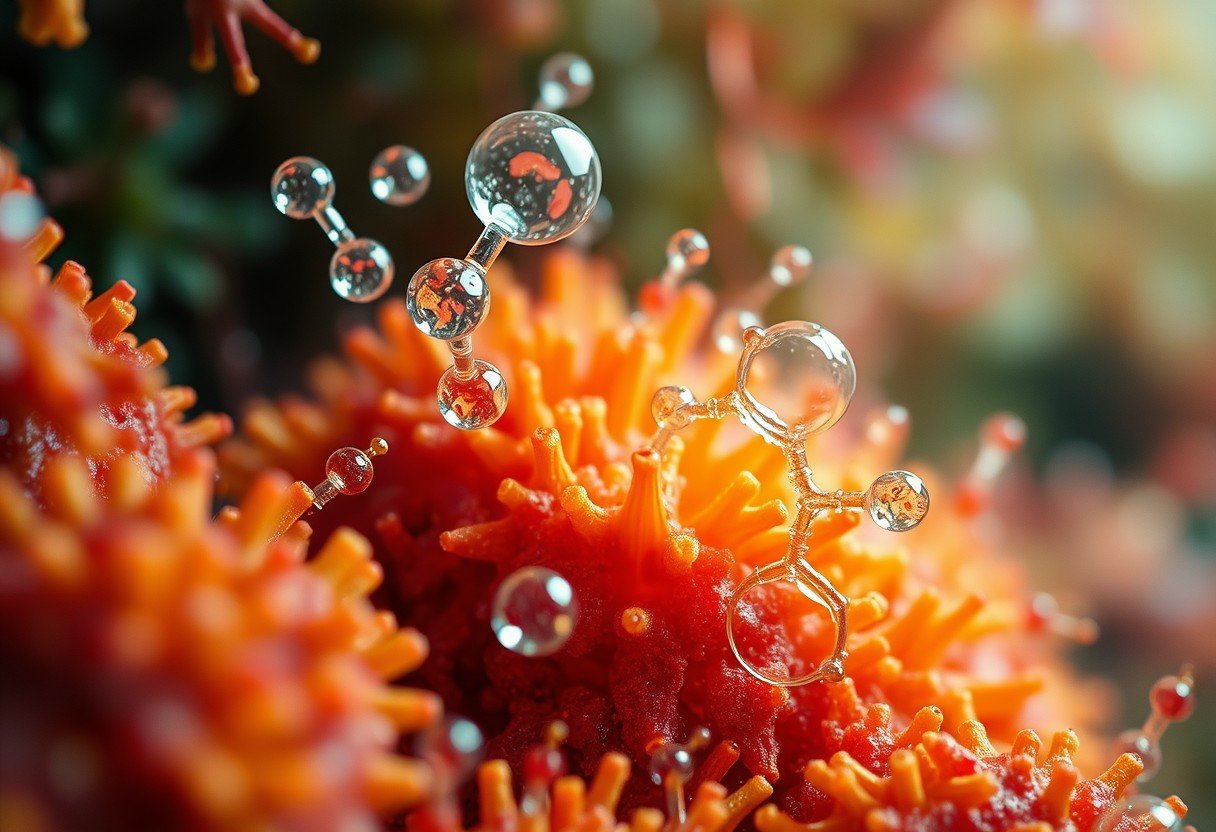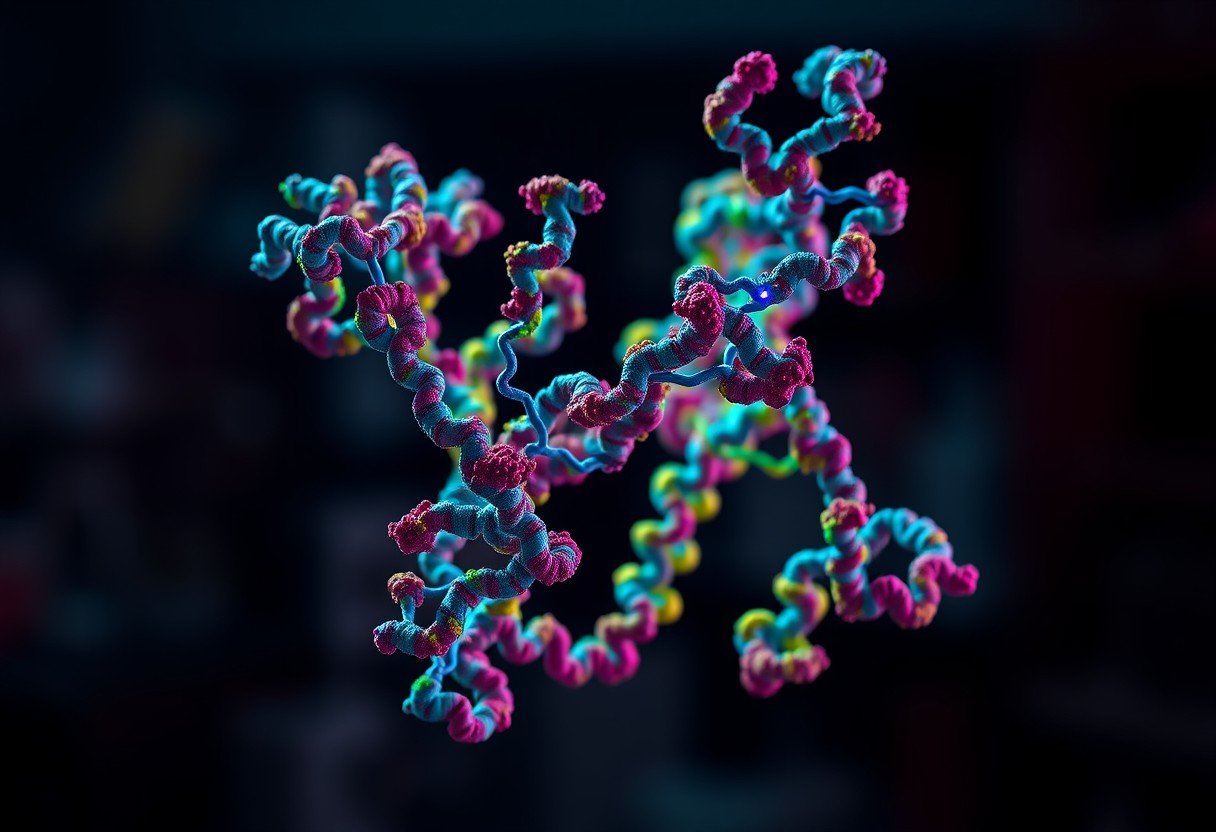When you think about life, carbon is usually the first element that comes to mind. After all, we are “carbon-based lifeforms.” But what if I told you that the most abundant and one of the most vital molecules found in all living things completely lacks carbon atoms? This molecule is water (H₂O), and it is essential for countless biological processes, from regulating temperature to transporting nutrients. Understanding these non-carbon molecules is key to appreciating the full complexity of life.
What Defines an Organic Molecule?
Before we dive into the carbon-free molecules, it’s helpful to understand what makes a molecule “organic.” In biology and chemistry, the term organic refers to molecules that contain carbon atoms, typically bonded to hydrogen atoms. These form the building blocks of life.
The vast majority of molecules in your body are organic. They create complex structures that perform specific jobs. Think of carbohydrates that give you energy, proteins that build muscle and run chemical reactions, fats that store energy, and DNA that holds your genetic code.
Carbon is special because it can form four strong bonds with other atoms. This allows it to create long, stable chains and complex rings, which is why organic molecules can be so diverse and perform so many different functions within your cells.
The Unsung Heroes: Inorganic Molecules in Your Body
While organic molecules get most of the attention, inorganic molecules are just as crucial for survival. These are molecules that typically do not contain carbon-hydrogen bonds. They might be simple, like oxygen gas, or slightly more complex, like salts.
These molecules are the support crew that makes everything else possible. They are involved in maintaining balance in your body, helping nerves send signals, and allowing muscles to contract. Without these inorganic components, the complex machinery of your cells would grind to a halt. They are essential for maintaining the stable internal environment known as homeostasis.
Water: Life’s Most Essential Carbon-Free Molecule
Water is, without a doubt, the most important inorganic molecule for all known life. Your body is about 60% water, and this simple molecule of two hydrogen atoms and one oxygen atom is involved in nearly every biological process.
Its unique structure gives it special properties. Because of its polarity, water is an excellent solvent, meaning it can dissolve many other substances. This is why your blood, which is mostly water, can transport nutrients, hormones, and waste products throughout your body.
Water’s role is incredibly diverse. It is essential for:
- Regulating your body temperature through sweat and evaporation.
- Participating directly in chemical reactions, like breaking down food during digestion.
- Lubricating joints and protecting organs and tissues.
Every single cell in your body depends on water to function correctly. It provides the environment where the chemical reactions of life can happen.
Beyond Water: Key Minerals That Sustain You
Minerals are another critical group of inorganic substances that your body needs to thrive. These are elements on the periodic table that you get from your diet. They don’t provide energy like carbohydrates or fats, but they have hundreds of essential roles.
For example, calcium is famous for building strong bones and teeth, but it’s also vital for muscle movement and sending messages through your nervous system. Iron is a key component of hemoglobin, the protein in red blood cells that carries oxygen from your lungs to the rest of your body.
Other key minerals include sodium, potassium, and magnesium, which are crucial for maintaining fluid balance and enabling nerve impulses. Your body needs these in the right amounts to keep your heart beating and your brain working properly.
Crucial Gases We Need That are Carbon-Free
Life also depends on simple inorganic gases. The most obvious one is oxygen (O₂). For humans and most other animals, oxygen is necessary for cellular respiration. This is the process where your cells break down sugar to produce ATP, the main energy currency of the cell.
Without a constant supply of oxygen, our energy production would stop in minutes. Oxygen is the final ingredient in the complex reaction that powers nearly everything you do.
It is interesting to note that while we breathe out carbon dioxide (CO₂), an inorganic molecule that contains carbon, the oxygen we breathe in is completely carbon-free.
How Do Organic and Inorganic Molecules Work Together?
Neither organic nor inorganic molecules can sustain life on their own. They work together in a beautifully complex system. The simple structures of inorganic molecules often enable the functions of the large, complex organic molecules.
Think of it like building a house. The organic molecules are the wood, bricks, and wires that make up the structure. The inorganic molecules, like water and minerals, are the nails, screws, and electricity that hold it all together and make it functional.
This table shows a simple comparison between the two types of molecules.
| Organic Molecules | Inorganic Molecules |
| Always contain carbon atoms | Typically lack carbon atoms |
| Examples include proteins and carbohydrates | Examples include water, minerals, and oxygen |
| Often large and complex in structure | Usually small and simple in structure |
For instance, many enzymes (which are organic proteins) require an inorganic mineral ion, known as a cofactor, to function correctly. This partnership between the two types of molecules is happening constantly in every one of your cells.
Frequently Asked Questions
What is the main type of molecule in living things that lacks carbon?
The main type is inorganic molecules. The most prominent and abundant example found in all living organisms is water (H₂O). Other crucial examples include mineral salts, oxygen gas, and phosphate ions.
Why is water considered an inorganic molecule?
Water (H₂O) is considered inorganic because it does not contain any carbon atoms. The definition of an organic molecule, in a biological context, is one that contains carbon, usually bonded to hydrogen.
Are all molecules with carbon in them organic?
No, not all of them. Molecules like carbon dioxide (CO₂) and carbon monoxide (CO) contain a carbon atom but are classified as inorganic. This is because they lack the carbon-hydrogen bonds and complex structures typical of organic molecules that form the basis of life’s machinery.
What is the most common inorganic molecule in the human body?
Water is by far the most common inorganic molecule in the human body, making up about 60% of an adult’s total body weight. It is essential for hydration, chemical reactions, and transporting substances.
How do we get the inorganic molecules our bodies need?
We obtain necessary inorganic molecules in several ways. We get water by drinking fluids and eating foods that contain it. Minerals like calcium, potassium, and iron come from our diet, and we get oxygen simply by breathing the air around us.









Leave a Comment